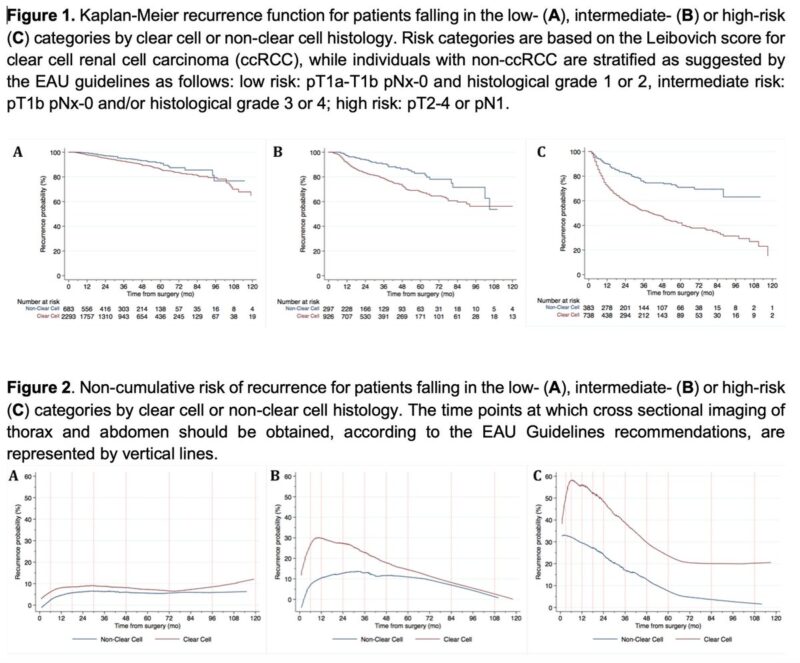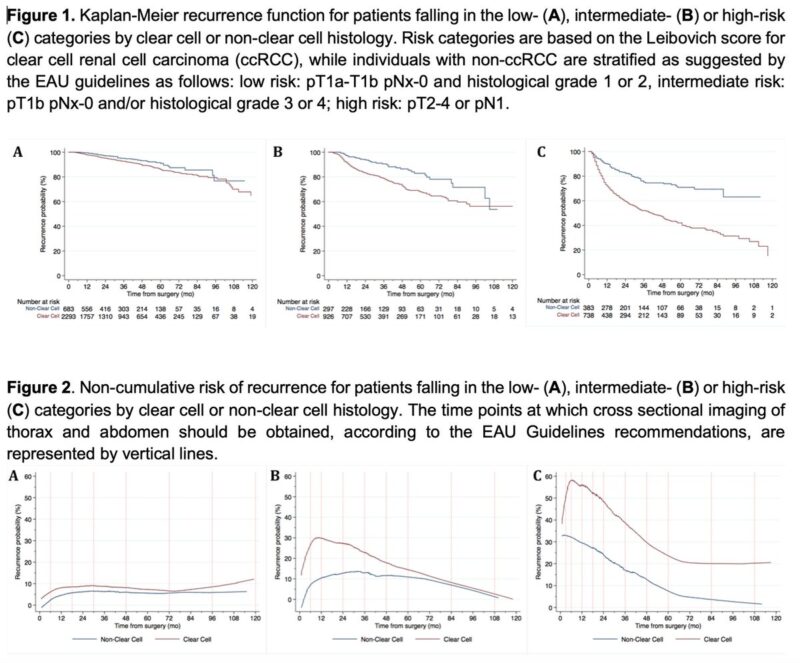Alberto Martini, Assistant Professor and Director of Research at the Division of Urology at University of Cincinnati, posted the following on X:
“Long overdue, but finally out:
Oncologic surveillance after surgical treatment for clinically localized kidney cancer: UroCCR 129.
In 2021, the European Association of Urology EAU Guidelines implemented a novel, expert opinion-based follow-up scheme, with a three-risk-category system.
For clear cell (cc) and non-cc renal cell carcinoma (non-ccRCC) after surgery with curative intent.
In our study, we aimed to validate the follow-up scheme and provide data-driven recurrence estimates according to risk groups, to confirm or implement the surveillance strategy
We identified 5,320 patients from a prospectively maintained database involving 28 French referral centers. The risk of recurrence, as either loco-regional or distant, was evaluated for each group (low- intermediate- or high-risk) according to ccRCC or non-ccRCC histology.
Based on the low recurrence risk of patients with intermediate risk non-clear cell histology, patients falling in this category could be followed up with a similar strategy to those falling in the low-risk category.

Similarly, patients with high-risk non-clear cell histology with negative imaging at 3 months, could be followed up similarly to individuals with clear cell disease falling in the intermediate risk group after the 3-month time point.

We proposed a revision of the oncologic surveillance intensity to the current EAU follow-up scheme. Our proposed revision of the follow-up strategy could potentially result in lower imaging per patient, hence reducing follow-up related costs and radiation exposure.
 ”
”
